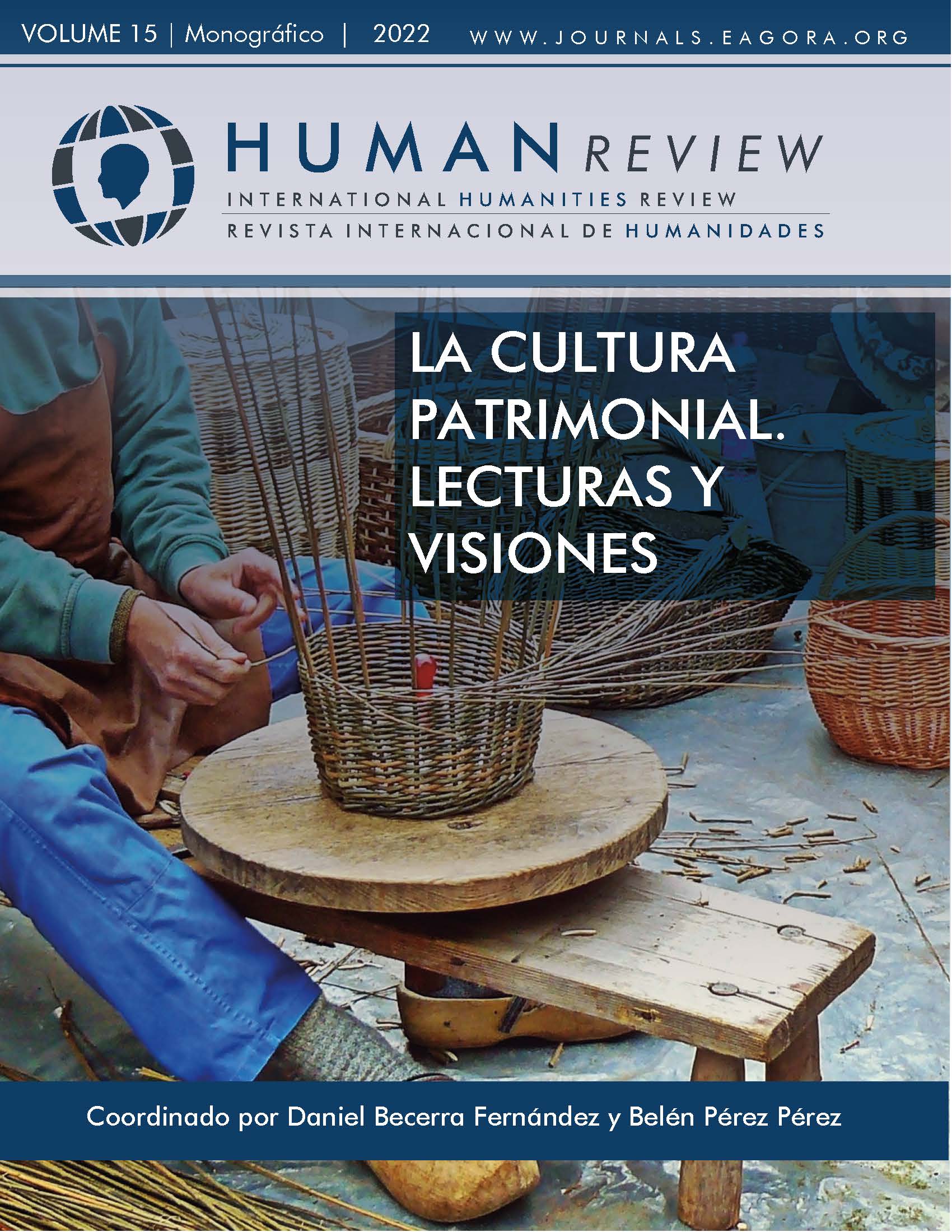Conceptual approach to new (and not so new) types of cultural heritage
DOI:
https://doi.org/10.37467/revhuman.v11.4268Keywords:
Cultural Heritage, Architecture Theory, Historical Urban Landscape, Vernacular Architecture, Architecture, Conservation, Cultural managementAbstract
Cultural heritage has acquired an increasingly complex, broad and dynamic meaning. On the one hand, the old monumental paradigm has been transcended; on the other hand, heritage has spread to innumerable epistemological and practical spheres that interpret and apply it according to their interests.
From a theoretical perspective, this work seeks a conceptual approach to cultural heritage through some keys that should be present in any reflection on heritage. This investigation will also be extended to the notion of Historical Urban Landscape and to the field of vernacular architecture in order to show that complexity and its real problems.
References
Bernstein, M. (2001), Instrinsic Value. Philosophical Studies: An International Journal for Philosophy in the Analytic Tradition, 102(3), 329-343.
Bradley, B. (2006). Two Concepts of Intrisic Value. Ethical Theory and Moral Practice, 9(2), 111-130.
BOE (1940). D. de 6 de septiembre de 1940 por el que se declara Monumento Histórico‐Artístico el pueblo de La Alberca (Salamanca). Boletín Oficial del Estado, 18 de septiembre de 1940 (pp. 6475‐6476).
Bortolotto, C. (2007). From the ‘monumental’ to the ‘living’ heritage: a shift in perspective. En J. Carman & R. White (eds.), World Heritage: global challenges, local solutions (pp. 39-45). British Archaeological Reports International Series, Archeopress.
Campos, G. (1981). Urbanismo y austeridad. Siglo veintiuno de España.
Consejo de Europa (2000). Convenio europeo del paisaje. https://www.mapa.gob.es/
Cullen, G. (1961). Townscape. The Architectural Press.
Giovannoni, G. (1931). Vecchie città ed edilizia nuova. Unione Tipografico-Editrice Torinese.
Glassie, H. (2000). Vernacular Architecture. Indiana University Press.
González-Varas, I. (2021). La cultura de la memoria y la expansión del patrimonio cultural. Algunas encrucijadas actuales. Maestría en Patrimonio Cultural UPTC.
ICOMOS (1999). Carta del Patrimonio vernáculo construido. https://www.icomos.org/images/DOCUMENTS/Charters/vernacular_sp.pdf
ICOMOS (2005). Declaración de Xi’an sobre la conservación del entorno de las estructuras, sitios y áreas patrimoniales. https://www.icomos.org
Kagan, S. (1998). Rethinking Intrinsic Value. The Journal of Ethics, 2(4), 277-297.
Kupperman, J. J. (2005). The Epistemology of Non-Instrumental Value. Philosophy and Phenomenological Research, 70(3), 659-680.
Lalana, J. L. (2011). El paisaje urbano histórico: modas, paradigmas y olvidos. Ciudades, 14, 15-38.
Lalana, J. L. & Pérez, J. (2018). El concepto de paisaje urbano histórico como herramienta de aproximación al patrimonio urbano. En M.D. Campos & J. Pérez (coord.), El conjunto histórico de Grajal de Campos (pp. 49-86). Universidad de León, León.
Lalana, J. L. (2019). Paisaje, ambiente y entorno. La necesaria acotación semántica del tratamiento de los contextos, en R. Payo et al. (eds.), Vestir la Arquitectura. XXII Congreso nacional de Historia del Arte (pp. 1217-1221). Universidad de Burgos.
Larrère, C., & Larrère, R. (1997). Du bon usage de la Nature. Pour une philosophie de l’environnement. Aubier.
Morin, E. (1997). Introducción al pensamiento complejo. GEDISA.
Muñoz Viñas, S. (2003). Teoría contemporánea de la Restauración. Editorial Síntesis.
Pérez Gil, J. (2016). ¿Qué es la arquitectura vernácula? Historia y concepto de un patrimonio cultural específico. Universidad de Valladolid.
Pérez Gil, J. (2022). Built Ethnological Heritage: from democratization to democracy. Arte, Individuo y Sociedad, 34(2), 499-519. https://dx.doi.org/10.5209/aris.74451
Riegl, A. (1903). Der moderne Denkmalkultus. Sein Wesen und seine Entstehung. Viena-Leipzig.
Ronnow-Rassmussen, T. (2002). Instrumental Values: Strong and Weak. Ethical Theory and Moral Practice, 5(1), 23-43.
Santos y Ganges, L, Pérez Gil, J. & Fernández Maroto, M. (2021). Multidiscipline, interdiscipline and transdiscipline in the teaching of Architecture. EDULEARN21 Proceedings (pp. 411-418). IATED Academy.
Stoica, G. (1979). Qu’est-ce que c`’est l’architecture vernaculaire. ICOMOS.
UNESCO (1962). Recomendación relativa a la protección de la belleza y el carácter de los lugares y paisajes. http://portal.unesco.org
UNESCO (2003). Convención para la salvaguardia del patrimonio cultural inmaterial. https://ich.unesco.org/es/convenci%C3%B3n
UNESCO (2011). Recommendation on the Historic Urban Landscape. http://portal.unesco.org
Zimmerman, J. (1999). In Defense of the Concept of Intrinsic Value. Canadian Journal of Philosophy, 29(3), 389-409.
Downloads
Published
How to Cite
Issue
Section
License
Those authors who publish in this journal accept the following terms:
- Authors will keep the moral right of the work and they will transfer the commercial rights.
- After 1 year from publication, the work shall thereafter be open access online on our website, but will retain copyright.
- In the event that the authors wish to assign an Creative Commons (CC) license, they may request it by writing to publishing@eagora.org









